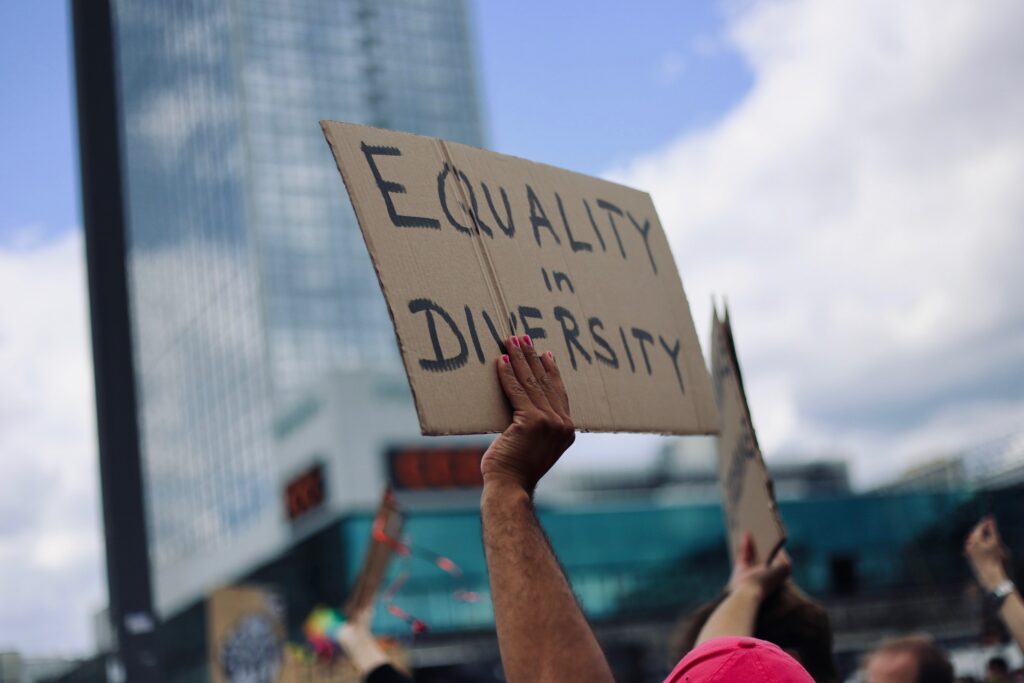As we’re focusing our corporate social responsibility lens on Diversity and Inclusion during the same month we recognize Juneteenth, it seems like an opportune time to speak about the dangers of companies blending Black History Month with Diversity initiatives.
Black History Month started in 1915, 50 years after the 13th Amendment abolished slavery. The initiative was spearheaded by Harvard-trained historian Carter G. Woodson and minister Jesse E. Moorland. Even so, it wasn’t until 1976 that US presidents started to recognize Black History Month annually.
The history of diversity and inclusion in the workplace first emerged in the 1960s, as training in response to affirmative action and equal employment laws. While, yes, it was in response to systemic racism, discrimination, and de facto regulations, these two initiatives operate in separate spheres.
Primarily, Black History Month is targeted towards promoting the betterment, research, and acknowledgement of African Americans in the world, versus diversity and inclusion’s focus on regulation, policies, and corporate governance for all protected classes to be integrated and work together.
Knowing why we’re here
#MeToo. #BlackLivesMatter. #StopAsianHate. #StopAAPIHate. #StandWithUkraine. #PrideMonth.
These movements are more closely related to diversity and inclusion as opposed to Black History Month. The ease, however, of attaching the importance of diversity and inclusion into Black History Month and highlighting it largely in that month alone is a separatist way of thinking that goes against the ideals of both.
To be clear, Black History Month shouldn’t be the only time that the plight of African Americans should be visible. It shouldn’t be the only time great people who happened to born Black should be celebrated.
To relegate conversations about either of these topics to an isolated time period or to pretend they’re both the same—both of these common practices go completely against the goals and values of these movements. As brands embrace these values, they must do so authentically, and not in a halfway mash-up attempt to cover everything at once. Dropping the ball on such important issues threatens an organization’s reputation, no matter how noble its efforts. That is the greatest danger when it comes to this situation. What can easily happen is that diversity and inclusion becomes synonymous with Black rights.
It is not.
I would also like to point out I am a BIPOC worker—Black, to be exact. The plight of those in my demographic is also one that needs to be recognized and handled every day. So too is it for those who suffer from mental health issues, veterans, Asian Americans, those with disabilities, single parents, and so many more. For example, this month is also Pride Month, a time to celebrate a protected class that has its own important place within diversity and inclusion conversations and efforts.
Again, diversity, equity, and inclusion (or DEI) encompasses everyone, from internal to external customers. It gives us a dedicated calendar for initiatives, trainings, and pulse checks that focuses on bringing everyone together.
The Black experience at work is a different matter …
According to a study by McKinsey, Black US employees hold a disproportionate share of frontline jobs and make up a representative 12% of entry-level jobs at the companies that participated in their research. Despite this, they don’t see themselves promoted to managerial-level or high positions at the same rates as others. Those who are lucky enough to gain a managerial position are very rarely promoted above that level.
On the current trajectory, it will take about 95 years for Black employees to reach talent parity across all levels in the private sector (McKinsey)
For sure, focusing on the need for racial equity (a part of DEI) does help to improve the Black Experience in the workplace. But often companies are still not answering these deficiencies in their DEI initiatives despite highlighting them during Black History Month. It’s tone deaf, fake, and problematic, to borrow lingo from today’s youth.
Blending them is a dangerous tightrope walk
So why do these often come together? Simply put, it’s easier. Easier to synonymize Black with DEI. It’s easier to incorporate other protected classes into legislation and represent them. It’s easier to ask what someone’s pronouns are versus understanding the system of racial inequity that bars some from reaching higher heights.
It’s easier to put a Black worker as manager of DEI, while ignoring the fact they will rarely hold other titles.
In short, blending them, when they are two very separate issues that only overlap at points, is dangerous to brand equity, progress, and creating a truly diverse corporate culture.
Ignoring one denies the other. Uplifting one group throws the others into shadows. Not giving them all an equal place to stand ensures that most will hit glass ceilings before they have even tried for promotions.
The best path forward is to recognize different focuses within your DEI initiatives to ensure you’re covering all groups, and tackling each of their particular issues in the workplace.
Now is the best time to get feedback from your employees and consumers about what matters most to them, and use that information to decide which initiatives to start with. Checking the pulse of your employees and customers can lead to deeper knowledge and better relationships. Don’t know where to start? We’re here to support your efforts!








